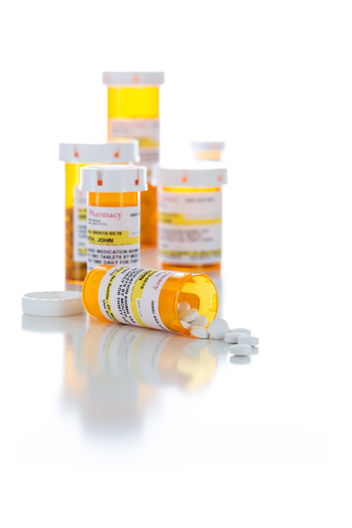How to Switch from Brand to Generic Drugs
December 28, 2021
The Inside Rx Blog
Get the Inside Scoop on tips & tricks that may help your family save on prescriptions!
Subscribe to stay up to date with the latest news and tips
The retail cost of brand-name drugs has steadily increased over the years. An older American would have to pay an average annual cost of $6,600 for a brand drug in 2020, which is $1,500 more than the average annual cost of the same drug in 2015. Some people may have no alternative to taking a brand drug, especially if a doctor prescribed it or if there is no generic drug available at the moment.
For many people, generic drugs are a cheaper alternative to brand drugs. Generic drugs are more commonly prescribed than brand drugs, and they also help make overall treatment costs more affordable. Continue reading to learn more about how to switch from brand to generic drugs.
Is the generic drug the same as the brand drug?
Yes, a generic drug is essentially the same as a brand-name medicine. The generic version contains the same active ingredient and is approved by the FDA to be effective for the same purposes as a brand drug. The only difference is that the generic drug may look different than the brand-name version. The generic medicine is also much cheaper than the brand-name version.
When a drug first becomes available on the market, it is typically approved and protected under a patent. This gives exclusivity rights to the drug company that invested money and years into developing the drug. It means that no other manufacturer can make the same drug for a certain period of time. After the drug’s patent expires, other companies can manufacture a generic version of the drug, identical to the brand name regarding effectiveness and safety.

Integrating a Prescription Discount Card into Member Engagement Platforms

How Prescription Discount Programs Can Lower Health Plan Risk

How to Handle a Drug Price Increase (After Your Plan Resets)

Projection Trends: Rx Cost Drivers to Watch in 2026
Switching from brand to generic drugs
The pharmacy can dispense most medications as a generic, even if the healthcare provider writes the brand-name version on your prescription. In some cases, your doctor may specify that the brand-name drug is dispensed to you. Make sure to talk to your doctor about using a generic alternative if they prescribe you medication. That way, you can take advantage of easy drug savings without sacrificing how well the drug will work.
If the drug your doctor recommends is not available as a generic, you can try asking if there is a similar drug available as a generic. Many drugs are part of the same drug class, such as NSAIDs or ACE inhibitors, and they often have identical effects since they work in the same way.
Some drugs, like certain antiepileptic drugs and extended-release drugs, may not be substituted for the generic version. In some cases, they may be recommended with caution or prior approval from your doctor. Therefore, it’s essential to understand that not all drugs can be given as a generic.
Escitalopram Oxalate
$ 11.48Atenolol
$ 7.66Save on both brand and generic drugs
In general, generic drugs are a cheaper alternative to brand drugs. The production of more generics of a drug also creates competition and helps bring down the overall price of the drug. Research has shown that when there are six or more competitors producing a generic, the cost of the brand-name counterpart can be reduced by as much as 95%.
In most cases, insurance plans will provide coverage for the generic version of a drug. However, the costs of both brand and generic drugs can vary depending on which plan you have. If you don’t have insurance or your insurance doesn’t provide adequate drug coverage, drug costs can be high. If you’re looking to save on both brand and generic drugs, you can use a discount savings card like Inside Rx.
The Inside Rx card is accepted at over 60,000 pharmacies across the nation. You can search your medications on Inside Rx to compare prices at pharmacies near you. Instantly download your unique savings card for free to start saving! Present the card to your pharmacist with your prescription to see if you can save up to 80% on brand and generic drugs.
To learn more about Inside Rx, visit our Help page.
Most brand-name medications have a generic alternative. These generic alternatives have the same chemical makeup as the brand-name counterparts, but are often offered at a lower cost. If you are looking to save on your prescription costs, or just keep your options open, switching to generic drugs might be a viable option for you. Learn how to switch from brand to generic drugs below.